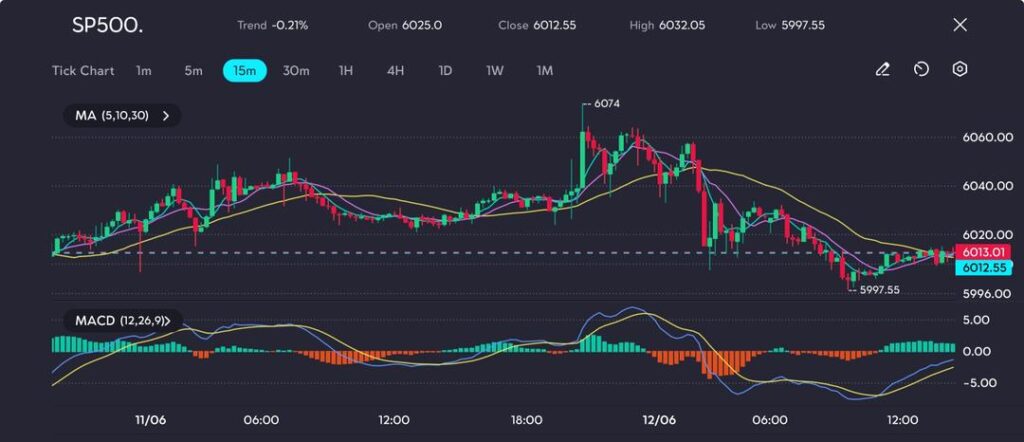The S&P 500 lost ground on Thursday, ending the session at 6,012.55 after briefly touching an intraday peak of 6,074. While initial optimism was sparked by softer-than-expected US inflation figures, that enthusiasm proved short-lived as global risk factors and doubts surrounding the US – China trade truce returned to the fore. The index dipped 0.21% on the day, suggesting some exhaustion after edging close to record highs earlier in the week.
Investor attention was firmly on the latest Consumer Price Index (CPI) release, which indicated that US inflation rose at a slower pace than anticipated in May. Although this eased immediate pressure on the Federal Reserve to adjust interest rates, caution prevailed among traders. Eyes now turn to forthcoming producer price data, which could reignite inflationary concerns, particularly given ongoing cost pressures linked to tariffs. This report will also provide insights into the Fed’s preferred inflation gauge, the Personal Consumption Expenditure Index.
Markets are currently factoring in a 70% likelihood of a quarter-point interest rate cut by September, despite expectations that the Fed will hold steady at its upcoming meeting. Shane Oliver, Chief Economist at AMP Capital, noted that tariffs could either stoke inflation or squeeze corporate margins, reinforcing the rationale for the Fed’s careful approach.
Trade policy developments added another layer of uncertainty. President Trump confirmed that within the next fortnight, the US will begin issuing letters to major trade partners, setting out unilateral tariff terms ahead of new negotiations. Although he hailed the recent US – China deal, which includes relaxed restrictions on rare earth exports and student visas, investors remained sceptical. Many are awaiting more concrete details before committing further.
Technical Analysis
The S&P 500 retreated from its high of 6,074 following a volatile trading session, briefly finding support at 5,997.55 before regaining stability. Despite a promising start, momentum weakened during European hours, with MACD indicators turning negative and red histogram bars signalling a decline in bullish strength.

Moving averages have begun to level out, pointing to a period of consolidation. Although the index is attempting a modest recovery above the 6,000 threshold, upward momentum appears fragile unless prices can regain the 6,030 to 6,050 zone. A drop below 5,995 would increase the risk of a deeper pullback in the near term.
With key inflation data, central bank guidance, and further commentary from Washington on the horizon, volatility is likely to rise. Traders should remain alert for sudden shifts in sentiment as geopolitical uncertainties and market expectations begin to align more closely.







